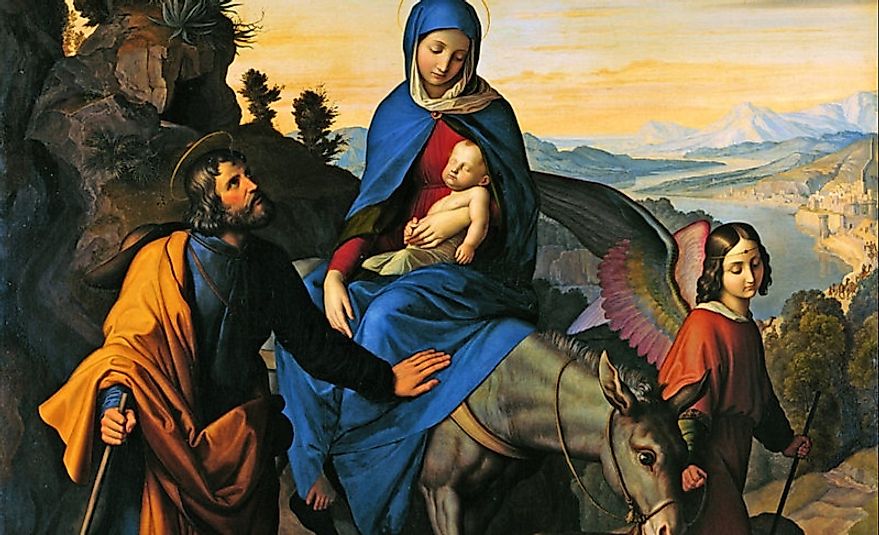What Was The Nazarene Art Movement?

5. Overview of the Style -
The Nazarene art movement is considered a subcategory of the larger Romanticism movement. It is characterized by its appearance, which seems to be from an older era than that which it was actually created. The artwork is influenced by German Medieval and Italian early Renaissance painting techniques. Additionally, artists of this movement often used German and Christian subjects for their work. Nazarene art is sometimes described as patriotic, displaying various scenes from German history, and religious, reflecting mysticism of the Christian religion.
4. History and Development -
The Nazarenes emerged from a group of German Romantic artists who studied at the Fine Arts Academy in Vienna. Founded in 1809, the artists hoped to reform art by utilizing it for religious purposes, rejecting the Neoclassicism art of the time. The group moved to the convent of Saint Isidoro in Rome, where they worked between 1810 and 1815. They led a monastic and devout lifestyle, dressing similar to how they believed the characters of the Bible would have and growing long hair. The Nazarene art movement not only focused on historical and biblical scenes, but also on a revival of fresco paintings, or murals. During the late 1820’s, the group separated, all but one returned to Germany.
Their separation did not, however, result in the conclusion of the Nazarene art movement. The reform continued to be influential and many younger artists were inspired by the works of the Nazarenes. The term Nazarene was used to describe these individuals and their art until the mid-19th Century.
3. Notable Artists and their Works -
Among the original Nazarenes, only Friedrich Overbeck remained in Rome. He is considered the leader of the Nazarene movement. In Rome, he maintained an influential art workshop where many European painters came to practice their work. The paintings of Overbeck tended to focus on religious themes. His most famous paintings included Rose Miracle of Saint Francis, The Adoration of the Magi, and Jerusalem Delivered.
Another notable artist of the Nazarene art movement is Peter Cornelius. When the original Nazarenes disbanded, Cornelius went to Munich where he was commissioned by the Crown Prince Ludwig of Bavaria. Here, Cornelius continued to work on fresco style paintings. The most famous of these is the Last Judgment, which is bigger than the Sistine Chapel work of Michelangelo. He went on to direct the Fine Art Academy of Dusseldorf and Munich.
2. Decline and Successive Movements -
Although the Nazarene group eventually separated and went on to work independently, their original movement influenced future artistic styles. The most famous of these Nazarene-inspired art movements was the Pre-Raphaelite Brotherhood. Founded in England in 1848, the pre-Raphaelites worked to reform art by rejecting the styles of academic painting and composition being taught at the time. They wanted to return to artistic styles that included complex compositions, extreme detail, and intense colors.
1. Legacy -
Besides leaving an impact on future artistic styles, the Nazarene art movement will be remembered as one which reflected honest expression in art. This group of individuals was one of the first to reject the common teachings of art academies, taking back the older, more pure styles of painting. This demand to return to art with religious and historic meaning and to move away from salon art and technical painting styles, influenced future generations of artists. In fact, the avant-garde movement of the late 1800’s is believed to have had its roots, at least in part, in the Nazarene art movement as well.







